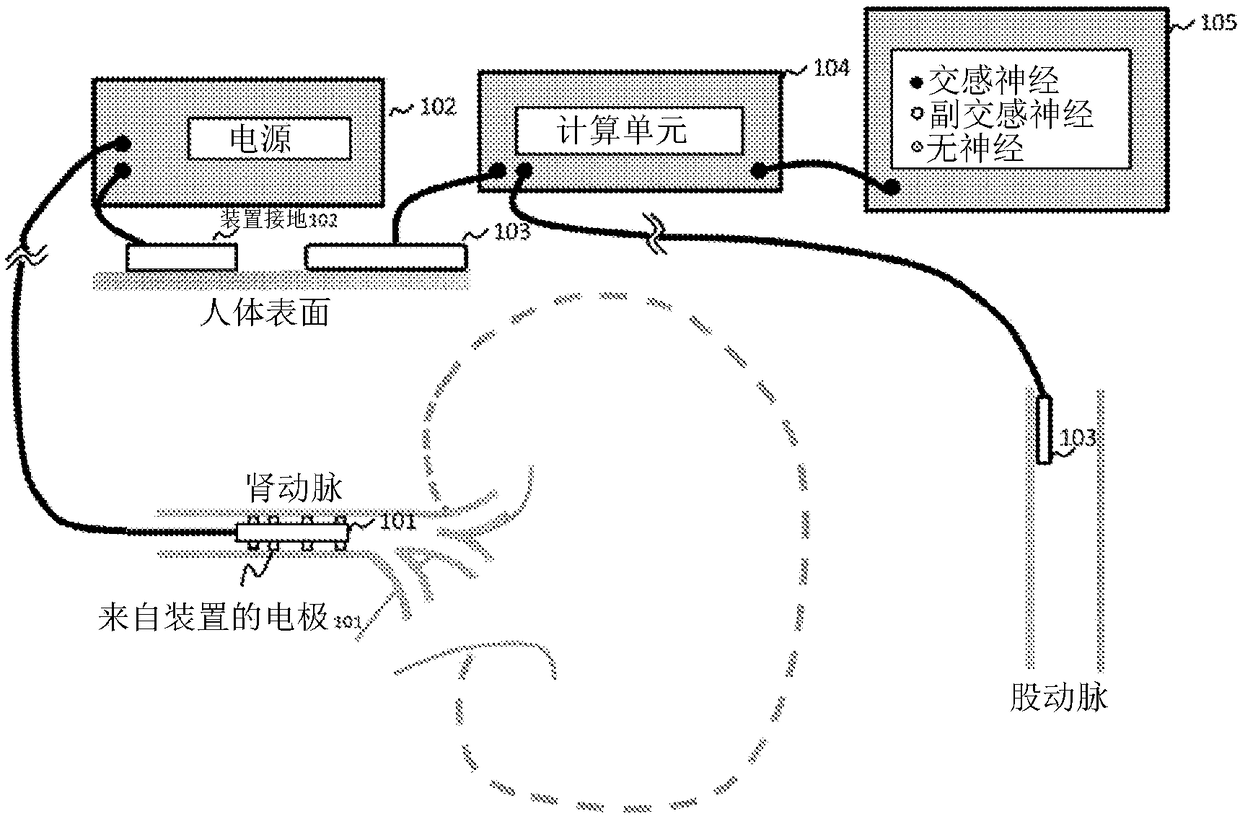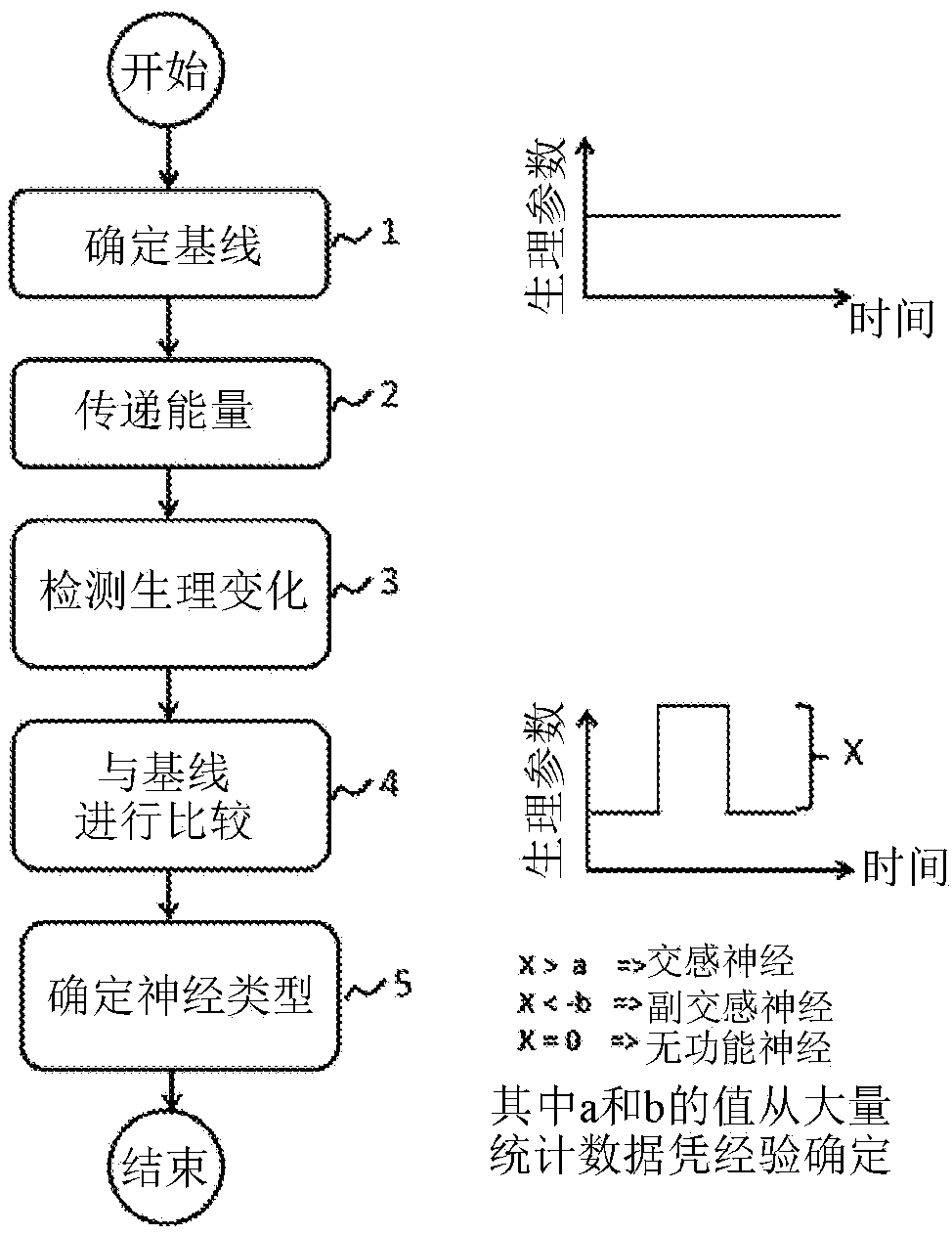System and method for mapping functional nerves innervating wall of arteries, 3-d mapping and catheters for same
A catheter and renal artery technology, applied in the field of catheter system for renal nerve mapping and ablation, can solve the problems of lack of immediate postoperative assessment methods, failure of energy transfer, insufficient dose, etc.
- Summary
- Abstract
- Description
- Claims
- Application Information
AI Technical Summary
Problems solved by technology
Method used
Image
Examples
example 1
[0228] Locate the nerves that innervate the arterial wall
[0229] In acute pig experiments, a method for locating nerves innervating the arterial wall by examining changes in physiological parameters following the delivery of an appropriate dose of energy was designed and performed. The goals of this experiment are:
[0230] 1. For the purpose of renal nerve mapping and ablation, test a currently existing cardiac ablation catheter (7F, Type B, 2-5-2mm spacing, RMT diagnostic / ablation steerable catheter, Biosense Webster, Diamond Bar, CA 91765, USA) and radio frequency generator (STOCKERT 70RF generator, Model Stockert GmbH EP-SHUTTLE ST-3205, STOCKERT GmbH, Freiburg, Germany).
[0231] 2. Test renal nerve mapping by delivering electrical stimulation at different sites within the lumen of the left and right renal arteries to examine changes in blood pressure and heart rate.
[0232] 3. Determine the safe range of high radio frequency energy to be launched into the renal a...
example 2
[0238] Relationship between physiological parameters and nerves innervating arterial walls
[0239] To demonstrate that energy delivered to different locations on the arterial wall can lead to different effects on physiological parameters such as blood pressure and heart rate, and that such features can be used to identify the type of nerves innervating the arterial wall, the electrical energy is delivered to the arterial wall according to several strategies. Innervation area on the wall of the renal artery in experimental pigs. Detailed parameters regarding the electrical energy delivered to pigs 1, 2, 3, 4, 5, 6 and 7 are shown in Tables 1 to 7, respectively. For pigs 4 to 7, the equipment used was SyMapCath S07A600 and SYMPIONEER S1 v01 / 01.
[0240] In pig 1, four separate stimulations were performed in the left renal artery and two separate stimulations were performed in the right renal artery. As a preliminary test, on the ventral side of the left renal artery, two se...
example 3
[0301] Ensure energy can be delivered to the target nerve during ablation
[0302]Following the study of locating and identifying nerves in the arterial wall, energy suitable for ablation doses was again delivered to the innervation points in the renal artery wall of the same porcine model. The four ablations were delivered to the left renal artery and the right renal artery, respectively, starting from the renal side, moving to the abdominal aorta side in the order of movement from the anterior wall to the posterior wall, to the superior wall, and then to the inferior wall; each ablation The location of the previous ablation was ≤5 mm, and the electrode tip (catheter tip) of the ablation catheter was rotated 90 degrees after each ablation. According to literature (Krum 2009, 2010), low levels of energy (5-8 watts) can be applied for renal ablation, therefore, 5 and 8 watts of energy would be used for renal ablation. For left renal artery ablation, the applied energy level ...
PUM
 Login to View More
Login to View More Abstract
Description
Claims
Application Information
 Login to View More
Login to View More - R&D
- Intellectual Property
- Life Sciences
- Materials
- Tech Scout
- Unparalleled Data Quality
- Higher Quality Content
- 60% Fewer Hallucinations
Browse by: Latest US Patents, China's latest patents, Technical Efficacy Thesaurus, Application Domain, Technology Topic, Popular Technical Reports.
© 2025 PatSnap. All rights reserved.Legal|Privacy policy|Modern Slavery Act Transparency Statement|Sitemap|About US| Contact US: help@patsnap.com



